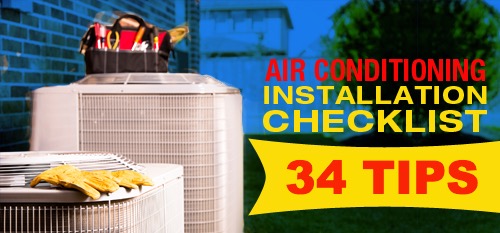 The summer months in Tempe Arizona and the surrounding area can be unforgiving if you are not prepared. With thermometers easily pushing into the hundreds and the sun cooking your house, having a working air conditioning unit is not only preferable but absolutely necessary. However, if you do not pay close attention during the installation process, you may overlook some very important steps or forget to ask some very important questions. You instead should handle your Tempe air conditioning installation with a carefully constructed plan that can account for potential technical issues. By using the following checklist, you can start getting this exact plan together right away.
The summer months in Tempe Arizona and the surrounding area can be unforgiving if you are not prepared. With thermometers easily pushing into the hundreds and the sun cooking your house, having a working air conditioning unit is not only preferable but absolutely necessary. However, if you do not pay close attention during the installation process, you may overlook some very important steps or forget to ask some very important questions. You instead should handle your Tempe air conditioning installation with a carefully constructed plan that can account for potential technical issues. By using the following checklist, you can start getting this exact plan together right away.
#1 Get Your Questions Answered Before the Installation
 Once the air conditioning unit has been installed, changing your mind is going to be very difficult. This is why it is so important to make sure all of your questions are answered, and needs are met, well before breaking ground on that new unit. Of course, there are many concerns that can come up after the fact, which is why you want to do as much research as possible beforehand.
Once the air conditioning unit has been installed, changing your mind is going to be very difficult. This is why it is so important to make sure all of your questions are answered, and needs are met, well before breaking ground on that new unit. Of course, there are many concerns that can come up after the fact, which is why you want to do as much research as possible beforehand.
Pro Tip: Only once all potential questions have been satisfied should you move forward. The cost of doing otherwise is too high.
Learn More: 5 Must-Ask Residential HVAC Unit Installation Questions
#2 Using a BTU Calculator
 One of the most important questions to keep in mind is figuring out exactly how big and strong you need your air conditioning unit to be. This is determined mostly by the size of your house, the dimensions for which are used in a calculation to produce a BTU rating. BTU stands for British Thermal Unit and is technically the amount of heat required to raise the temperature.
One of the most important questions to keep in mind is figuring out exactly how big and strong you need your air conditioning unit to be. This is determined mostly by the size of your house, the dimensions for which are used in a calculation to produce a BTU rating. BTU stands for British Thermal Unit and is technically the amount of heat required to raise the temperature.
Pro Tip: Larger spaces obviously will mean larger air conditioners, but using a free online BTU calculator can help you figure out precisely what size you need.
Learn More: Using a Tempe Home Air Conditioning BTU Calculator [Tips]
#3 Consider Zoning Your Home
 You may want to look into setting up a zoned air conditioning system in your Tempe home, especially if you have multiple floors. Warm air rises, and in many cases, the upper floors of a house will get much hotter than the first floor and below. You, therefore, might not want an air conditioner that is evenly distributing air throughout the house.
You may want to look into setting up a zoned air conditioning system in your Tempe home, especially if you have multiple floors. Warm air rises, and in many cases, the upper floors of a house will get much hotter than the first floor and below. You, therefore, might not want an air conditioner that is evenly distributing air throughout the house.
Pro Tip: You want to target specific areas, and perhaps at specific times. This could also help you to save money in the long run, so it might behoove you to examine how your unit is currently set up and finding out if there are more cost-effective options.
Learn More: Is It Smart to Install Zoning Air Conditioning in Tempe?
#4 Placement of an AC Unit
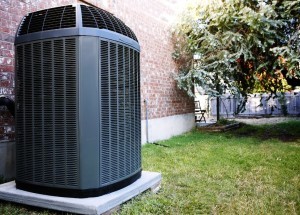 Considering the weather in Tempe, finding a place for your air conditioning unit is incredibly important. What makes the decision especially so difficult are the many options you have. Depending on the amount of sun the unit would get, you can choose to place it on the roof or on the side or around the back—anywhere with less sun and easy access for service technicians.
Considering the weather in Tempe, finding a place for your air conditioning unit is incredibly important. What makes the decision especially so difficult are the many options you have. Depending on the amount of sun the unit would get, you can choose to place it on the roof or on the side or around the back—anywhere with less sun and easy access for service technicians.
Pro Tip: Figuring this out early in the process will help your system to run more efficiently when the time comes.
Learn More: 3 Tips for Outside Air Conditioner Placement in Tempe AZ
#5 Shading Your AC Unit
 If your air conditioning unit gets too much sun, it could be made more susceptible to damage in the long run. It is for this reason that you will want to keep it out of the sun the best you can. This is really a matter of placement, but you might also want to consider shading your air conditioner.
If your air conditioning unit gets too much sun, it could be made more susceptible to damage in the long run. It is for this reason that you will want to keep it out of the sun the best you can. This is really a matter of placement, but you might also want to consider shading your air conditioner.
Pro Tip: Whether naturally against your Tempe home or with a constructed shade, keeping the sun’s rays off your unit will go a long way in keeping you cool this summer.
#6 Getting the Proper SEER Rating for Your Unit
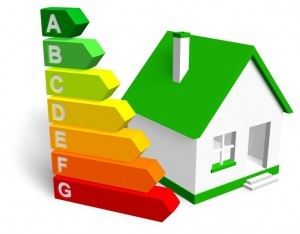 Especially in Tempe, you will need an air conditioning unit that does the job efficiently. After all, it will likely receive much attention this summer, so anything less than this is unacceptable. You need to, therefore, select a unit known for its energy efficiency, and one of the best ways to do that is by looking at the SEER rating.
Especially in Tempe, you will need an air conditioning unit that does the job efficiently. After all, it will likely receive much attention this summer, so anything less than this is unacceptable. You need to, therefore, select a unit known for its energy efficiency, and one of the best ways to do that is by looking at the SEER rating.
Pro Tip: The SEER rating can typically be found easily enough on the prospective air conditioner, and as long as it is a rating over 14 (on a scale of 25), you are in the clear.
Learn More: What is a Good SEER Rating for an AC Unit in Tempe AZ?
#7 Selecting an Energy Efficient Unit
 Having an energy efficient unit is important for many reasons, not the least of which because it will save good money over the long run. As mentioned already, SEER ratings are a good way to gauge how efficient an air conditioning unit is, and different locations of the United States have different federally mandated minimum ratings.
Having an energy efficient unit is important for many reasons, not the least of which because it will save good money over the long run. As mentioned already, SEER ratings are a good way to gauge how efficient an air conditioning unit is, and different locations of the United States have different federally mandated minimum ratings.
Pro Tip: For the American Southwest, the minimum SEER rating is 14, so you will want to make sure that whatever air conditioner you are selecting is above that line. Only then can you know that your HVAC system is running efficiently.
Learn More: Best Home Air Conditioning System for Your Tempe House
#8 Preparing the Area for Install
 Depending on where you are installing your air conditioning unit, you may have a lot or a little prep work to take care of beforehand. For outdoor units, you want to pick a space that is easy to access for technicians, and you will want to clear away any debris or shrubbery from the immediate vicinity.
Depending on where you are installing your air conditioning unit, you may have a lot or a little prep work to take care of beforehand. For outdoor units, you want to pick a space that is easy to access for technicians, and you will want to clear away any debris or shrubbery from the immediate vicinity.
Pro Tip: If you are installing in a window or on the roof, you will need to scan both areas similarly, making sure that nothing is in the way that could disrupt or tamper with your new unit.
Learn More: How to Prepare for an Air Conditioner Install in Tempe
#9 Air Handler Blower Speed Set for Proper CFM
 The air handler blower speed of your air conditioning unit will naturally adjust the temperature of the air being pushed out. Higher speeds will typically mean cooler temperatures while lower speeds mean the opposite.
The air handler blower speed of your air conditioning unit will naturally adjust the temperature of the air being pushed out. Higher speeds will typically mean cooler temperatures while lower speeds mean the opposite.
Pro Tip: When having an air conditioning unit installed in your Tempe home, you will need to make sure that the CFM (cubic feet per minute) is set at an optimal range to ensure that, whether hot or cold, your air conditioner can handle the task.
Learn More: Performing Residential A/C Airflow Setup
#10 Filter Installed
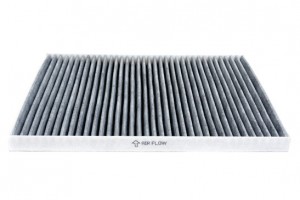 One of the vital components of an air conditioning unit, the filter is the piece that helps to regulate the airflow, and not having a clean working filter will certainly cause you grief over the long run. On the one hand, unsatisfactory filters can lead to high energy bills at the end of the month, and a dirty filter can also spread allergens and other airborne bacteria and viruses.
One of the vital components of an air conditioning unit, the filter is the piece that helps to regulate the airflow, and not having a clean working filter will certainly cause you grief over the long run. On the one hand, unsatisfactory filters can lead to high energy bills at the end of the month, and a dirty filter can also spread allergens and other airborne bacteria and viruses.
Pro Tip: You will want to regularly check your filter to prevent these issues.
Learn More: How to Install a Home AC Filter After a New Unit Set Up
#11 Evaporator Coil Installed and Leveled
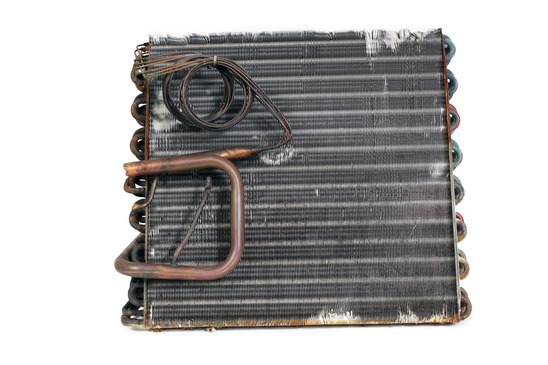 The evaporator coil is crucial to the operation of an air conditioning unit. Liquid chemicals such as Freon pass through these coils and are turned to gas, with the resulting heat absorbed by the coils in the process. This is what allows you to enjoy the comforts of your air conditioner.
The evaporator coil is crucial to the operation of an air conditioning unit. Liquid chemicals such as Freon pass through these coils and are turned to gas, with the resulting heat absorbed by the coils in the process. This is what allows you to enjoy the comforts of your air conditioner.
Pro Tip: By not making sure this piece of hardware is properly installed, you might be opening yourself up to some major internal damages later.
Learn More: Functions of an Evaporator
#12 Drain Pan Installed and Tested
 In many air conditioning units, water is often created as a byproduct through condensation, and the drain pan is where this water goes. Without having a drain pan properly installed and tested, you will no doubt suffer from water leaks, which will cause some big damages as time goes by.
In many air conditioning units, water is often created as a byproduct through condensation, and the drain pan is where this water goes. Without having a drain pan properly installed and tested, you will no doubt suffer from water leaks, which will cause some big damages as time goes by.
Pro Tip: Normally, the drain pan will be installed near the evaporator coil for this reason, and you will want to be sure to keep an eye on both, especially where cleanliness is concerned.
Learn More: 3 Benefits of Tempe Air Conditioner Drain Pan Install
#13 Safety Switch Installed and Tested
 Sometimes accidents happen, and when it comes to air conditioning, this usually means pretty hefty repairs. Water leaks are especially destructive, ruining floors and ceilings. Many air conditioning units, therefore, are installed with safety switches that need to be tested.
Sometimes accidents happen, and when it comes to air conditioning, this usually means pretty hefty repairs. Water leaks are especially destructive, ruining floors and ceilings. Many air conditioning units, therefore, are installed with safety switches that need to be tested.
Pro Tip: The safety switches will activate when the leak gets bad, shutting off your air conditioner to keep the situation from turning worse.
Learn More: Benefits of installing a safety float switch on air conditioning system
#14 Unit Set with Vibration Pads
 The one knock against strong air conditioning units is how noisy they can get. Your Tempe backyard should be enjoyed this summer, not avoided due to the air conditioner. A great way to alleviate this is by setting up vibration pads.
The one knock against strong air conditioning units is how noisy they can get. Your Tempe backyard should be enjoyed this summer, not avoided due to the air conditioner. A great way to alleviate this is by setting up vibration pads.
Pro Tip: Typically, vibration pads can sidle right underneath the unit to reduce the shaking and rattling, in turn making your backyard much more of an inviting space.
Learn More: Tempe AC Install: Reduce Air Conditioner Vibration Noise
#15 Level Condenser
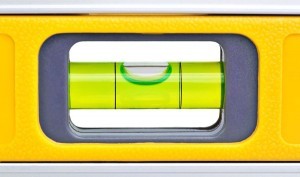 The outside unit of an air conditioner is called a condenser, and it will usually include a compressor, cooling fins, tubes and a fan. All of these parts need to be constructed in such a way that none of them impedes the other.
The outside unit of an air conditioner is called a condenser, and it will usually include a compressor, cooling fins, tubes and a fan. All of these parts need to be constructed in such a way that none of them impedes the other.
Pro Tip: When installing the condenser, it is very important that it is set up on a level surface and that the internal parts are tightly fastened. Otherwise, you are making yourself liable for some easily avoidable repairs.
Learn More: Does a Tempe Home AC Condenser Unit Need to Be Level?
#16 Refrigerant Piping Completed and Tested for Leaks
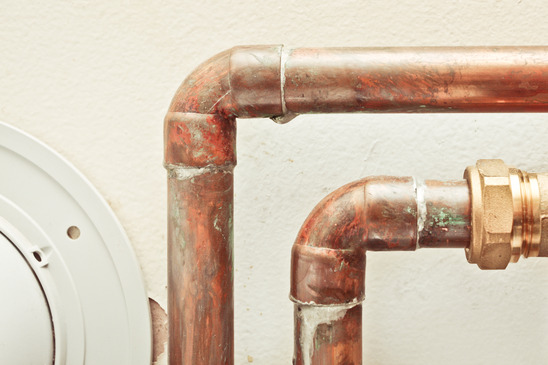 For your air conditioning unit to run effectively, it must be able to send refrigerant through the system easily and unobstructed. One of the most common refrigerants is Freon, which produces heating and cooling as it runs through the evaporator coil, backed by a clean drain pan. Refrigerant piping needs to be strong enough to carry the volume without losing integrity.
For your air conditioning unit to run effectively, it must be able to send refrigerant through the system easily and unobstructed. One of the most common refrigerants is Freon, which produces heating and cooling as it runs through the evaporator coil, backed by a clean drain pan. Refrigerant piping needs to be strong enough to carry the volume without losing integrity.
Pro Tip: During installation, it is also important that you test the piping for leaks. Correct any question marks right then to bypass future problems.
Learn More: Refrigeration piping I: Here are the piping basics
#17 Condensate Drain Line is Cleared
 In addition to heating and cooling your Tempe home, many air conditioning units will also work to lower humidity in the air by removing excess moisture. This condensation is then sent through a small drain line that leads outside.
In addition to heating and cooling your Tempe home, many air conditioning units will also work to lower humidity in the air by removing excess moisture. This condensation is then sent through a small drain line that leads outside.
Pro Tip: Keeping this drain line clear from debris and dirt will ensure that you are safeguarded from unforeseen and often costly leaks. When installing an air conditioner, the placement of the drain line should, therefore, factor into the decision.
Learn More: Why is a Condensate Drain Line Cleaning Important?
#18 Condensate Pump with Safety Switch [Installed & Tested]
 The drain line for your Tempe air conditioner is typically downward sloping to let gravity handle the removal of excess condensation from your unit. Sometimes this construction is not feasible. For example, an air conditioning unit located in the basement will have a hard time using a gravity drain line. This is where a condensate pump can come in handy.
The drain line for your Tempe air conditioner is typically downward sloping to let gravity handle the removal of excess condensation from your unit. Sometimes this construction is not feasible. For example, an air conditioning unit located in the basement will have a hard time using a gravity drain line. This is where a condensate pump can come in handy.
Pro Tip: By essentially replacing the drain line, a condensate pump can handle excess moisture in specifically placed air conditioners. You just want to make sure a safety switch has been installed and tested to prevent potential flooding.
Learn More: How to Replace a Broken Air Conditioner Condensate Pump
#19 Thermostat Installed
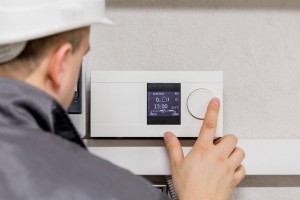 Air conditioning units are run through their thermostats, and it is very important that you invest in the right thermostat for your new Tempe installation. These work by using random air currents to gauge the temperature in the space. It will then regulate the heating and cooling of the space as specified on the display.
Air conditioning units are run through their thermostats, and it is very important that you invest in the right thermostat for your new Tempe installation. These work by using random air currents to gauge the temperature in the space. It will then regulate the heating and cooling of the space as specified on the display.
Pro Tip: Considering that this is how you control your air conditioner, you will want to go to great lengths to make sure the right thermostat has been installed and properly tested.
Learn More: How Often Do I Need a Tempe AC Thermostat Calibration?
#20 Ducting Completed
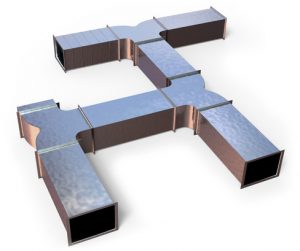 You will want to inspect the ductwork before installing a new air conditioning unit. This is to ensure that it is the right size to handle your heating and cooling needs and can also run efficiently as well.
You will want to inspect the ductwork before installing a new air conditioning unit. This is to ensure that it is the right size to handle your heating and cooling needs and can also run efficiently as well.
Pro Tip: If the ductwork is otherwise damaged in any way or leaking at spots, your air conditioner will overcompensate, leading to some high energy and repair bills in the future. This will require some regular maintenance over time to preserve the integrity.
Learn More: 3 Key Air Conditioning Duct Installation Questions to Ask
#21 Registers Installed
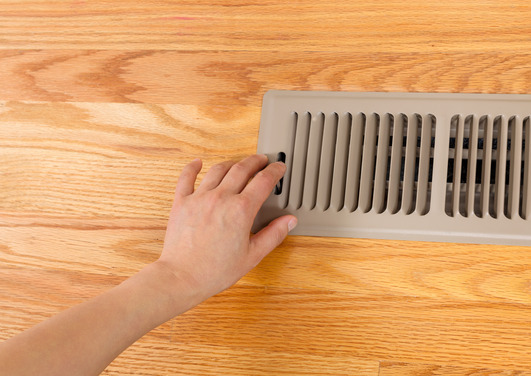 Within your heating and cooling system, registers are used to monitor and aid energy efficiency. These are the grills you find on the floors of homes, though what defines a register are its moving parts. Known as dampers, the moving parts are valves or plates that help to control airflow.
Within your heating and cooling system, registers are used to monitor and aid energy efficiency. These are the grills you find on the floors of homes, though what defines a register are its moving parts. Known as dampers, the moving parts are valves or plates that help to control airflow.
Pro Tip: Register dampers allow you to regulate how much hot or cold air is entering a space. As a result, registers are often an integral part of most HVAC systems and must be installed with care, preferably in a low traffic area of the room.
Learn More: Proper Placement of Heating or Cooling Registers & Ducts
#22 Airflow Checked
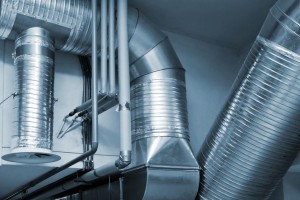 Considering how important airflow is to the success of any air conditioning unit, you need to make sure that it is checked regularly. This can be done a number of ways, though taking a close look at the ductwork is where you may want to start. Checking the actual airflow, however, can be a little difficult if you do not have the right equipment.
Considering how important airflow is to the success of any air conditioning unit, you need to make sure that it is checked regularly. This can be done a number of ways, though taking a close look at the ductwork is where you may want to start. Checking the actual airflow, however, can be a little difficult if you do not have the right equipment.
Pro Tip: If you are noticing high energy bills or slower than normal heating and cooling, you might want to have professional help. When first installing an air conditioner, airflow should repeatedly be checked as well.
Learn More: Why Do Tempe Install Experts Measure Airflow in Ducts?
#23 Low Voltage Completed
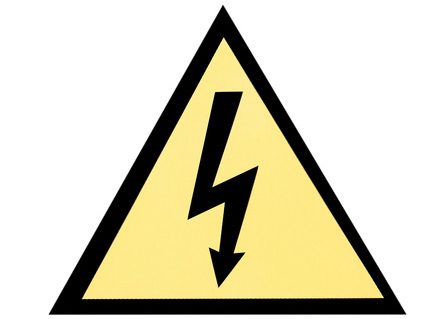 We often forget that while liquid and air are constantly passing through your HVAC system, they run off of electricity. Therefore, should you try running your Tempe air conditioner one day and nothing happens at all, there is a chance that there is a problem with the low voltage system.
We often forget that while liquid and air are constantly passing through your HVAC system, they run off of electricity. Therefore, should you try running your Tempe air conditioner one day and nothing happens at all, there is a chance that there is a problem with the low voltage system.
Pro Tip: The tricky part is that so many different things could be causing low voltage, ranging from a faulty control board to loose or damaged wiring. Your HVAC contractor should pay close attention to this during the installation process.
Learn More: Troubleshoot Low Voltage Transformers for Heating & Air Conditioning Systems
#24 Line Voltage Completed
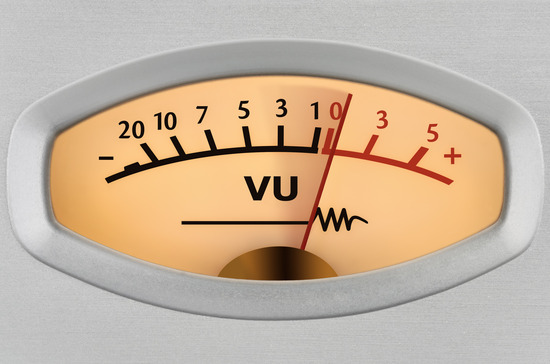 While low voltage systems are most common throughout the country, line voltage systems are also gaining traction. This is in part due to its simple wiring, which makes incorporating line voltage a straightforward affair. Since so many line voltage systems are used with radiant and resistance heaters, you will typically find line voltage in wall heaters and baseboards.
While low voltage systems are most common throughout the country, line voltage systems are also gaining traction. This is in part due to its simple wiring, which makes incorporating line voltage a straightforward affair. Since so many line voltage systems are used with radiant and resistance heaters, you will typically find line voltage in wall heaters and baseboards.
Pro Tip: Before installing an air conditioner in your Tempe home, you will, therefore, need to work out with a contractor what kind of voltage system would work best for you.
Learn More: The Proper Voltage for Operating an Air Conditioner
#25 System Started and Checked in All Modes
 This should almost go without saying, but this is the last thing you want to do before closing the book on your new Tempe air conditioner installation. By physically tinkering with all of the system’s settings, you need to get a feel for how everything works and if there is possible room for improvement.
This should almost go without saying, but this is the last thing you want to do before closing the book on your new Tempe air conditioner installation. By physically tinkering with all of the system’s settings, you need to get a feel for how everything works and if there is possible room for improvement.
Pro Tip: Obviously, nothing is perfect, but as long as you have started up the system and diligently checked every mode to see that it works, you should be in the clear.
Learn More: How to Test Your Central Air Conditioning System
#26 Receive Operations Manual
 It is not always necessary to have a Tempe service technician look at your air conditioning unit. Often, you can diagnose and correct simple enough problems on your own. This usually means consulting the operations manual for your new air conditioner and using the guidelines set down there to properly use and maintain the unit.
It is not always necessary to have a Tempe service technician look at your air conditioning unit. Often, you can diagnose and correct simple enough problems on your own. This usually means consulting the operations manual for your new air conditioner and using the guidelines set down there to properly use and maintain the unit.
Pro Tip: You will want to make sure you receive a copy of the operations manual. Whenever you have questions or want to learn more about a certain setting, you can then easily reference the manual.
Learn More: Why Tempe Homeowners Need an Air Conditioner User Manual
#27 System Operations are Explained
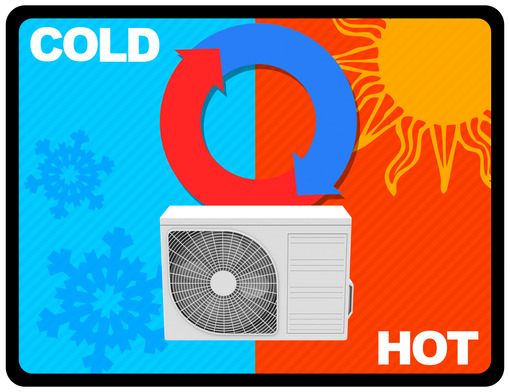 Just receiving a copy of the operations manual is not quite enough to walk away from the installation process secured and confident. In fact, you should always be asking questions, especially before your Tempe HVAC contractors wrap up.
Just receiving a copy of the operations manual is not quite enough to walk away from the installation process secured and confident. In fact, you should always be asking questions, especially before your Tempe HVAC contractors wrap up.
Pro Tip: You ought to be pretty well versed in the different system operations available to you, and this requires that you stay informed on all of your system operations.
Learn More: How a Central Air Conditioner Works
#28 Thermostat Operations are Explained
 While you will no doubt find all the information you could possibly need regarding thermostats in the operations manual, an installation contractor should still walk you through the different settings.
While you will no doubt find all the information you could possibly need regarding thermostats in the operations manual, an installation contractor should still walk you through the different settings.
Pro Tip: It is just important to reiterate that you should never wait when it comes to asking questions of your contractor. A simple few words explaining the thermostat should be enough to get you comfortable with the brand new system.
Learn More: Tempe Air Conditioner Settings for Summer [3 Tips]
#29 Filter Changes are Explained
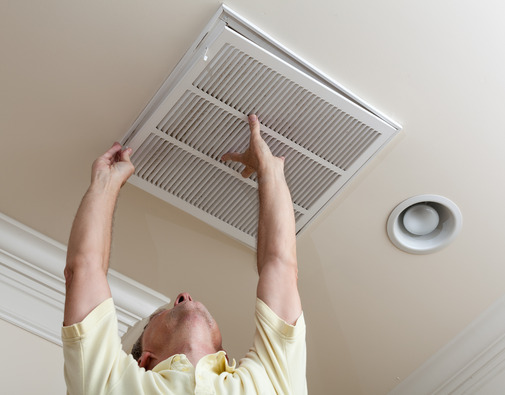 Changing out your air conditioner filters regularly will go a long way in saving you money on energy bills down the line while keeping your air conditioning unit in top notch shape. You should, therefore, seek to get some explanation from the installation contractor regarding how to approach potential new filters.
Changing out your air conditioner filters regularly will go a long way in saving you money on energy bills down the line while keeping your air conditioning unit in top notch shape. You should, therefore, seek to get some explanation from the installation contractor regarding how to approach potential new filters.
Pro Tip: You should know how often you should replace it as well as what kinds you should purchase. Since filters are such an integral part of your Tempe HVAC system, you should know your way around them.
Learn More: Why and How to Change Filters
#30 Sign the Finance Papers
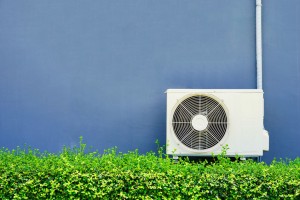 Installing a new air conditioning unit in your Tempe home is contracted work that is bought and paid for, and since these jobs are not always that cheap, you will want to make sure that you keep records of all important financial papers.
Installing a new air conditioning unit in your Tempe home is contracted work that is bought and paid for, and since these jobs are not always that cheap, you will want to make sure that you keep records of all important financial papers.
Pro Tip: Your HVAC contractor should start by supplying financial papers. You just then need to get copies.
Learn More: Financing an Air Conditioning Unit in Tempe [3 Benefits]
#31 Sign the Cash Rebate Papers
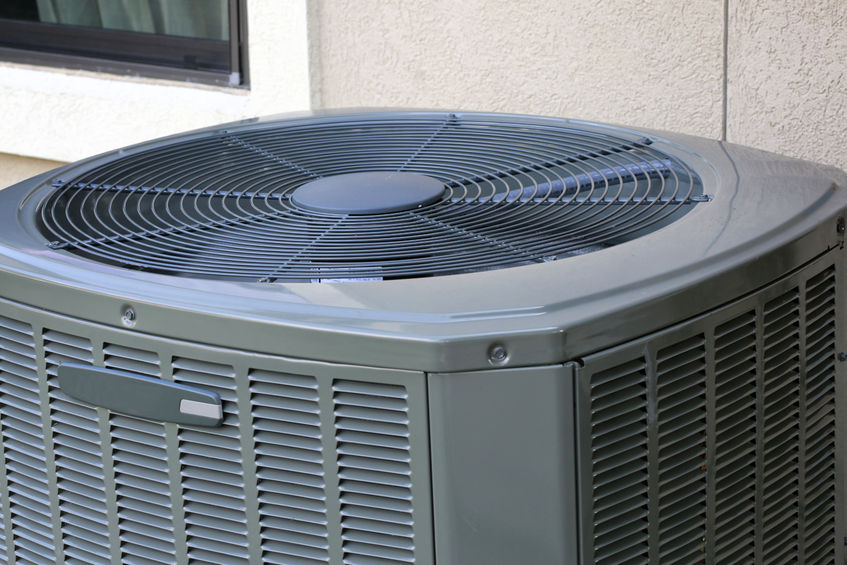 Although not applicable in all situations, sometimes you will have access to a potential cash rebate as a part of your Tempe installation project.
Although not applicable in all situations, sometimes you will have access to a potential cash rebate as a part of your Tempe installation project.
Pro Tip: Like with other important financial papers, you will want to get copies of all necessary cash rebate forms. This is only to make sure you are covered in case of future confusion or mix-ups.
Learn More: How to Find Rebates for Air Conditioning Units in Tempe
#32 Area Clean and Debris-Free
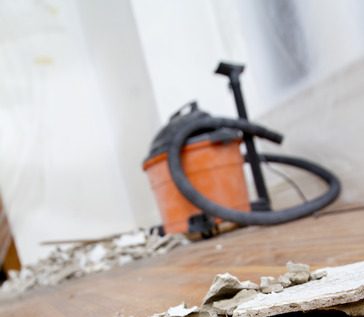 After the installation process is over, you should immediately turn your sights to cleaning up after the project. New air conditioning units typically require a lot of space and work to install correctly, and there will likely be debris anywhere the HVAC system was incorporated.
After the installation process is over, you should immediately turn your sights to cleaning up after the project. New air conditioning units typically require a lot of space and work to install correctly, and there will likely be debris anywhere the HVAC system was incorporated.
Pro Tip: It is important to coordinate with the contractors handling your installation to make sure all trash and debris are removed so you can skip directly to enjoying your new Tempe air conditioner.
Learn More: A Quality A/C Installation Includes These Steps
#33 Ask Final Questions
 Before the contractors hit the road for the last time, you need to get all those final questions off your chest. While you can always reach back out to a service technician in the future when problems arise, it is so much easier to skip this hassle altogether.
Before the contractors hit the road for the last time, you need to get all those final questions off your chest. While you can always reach back out to a service technician in the future when problems arise, it is so much easier to skip this hassle altogether.
Pro Tip: Get all necessary paperwork and learn any final pointers regarding your air conditioner.
#34 Schedule a Follow-Up
 Now that the process is over, and everything is installed and operating, it is time to relax and enjoy your new Tempe air conditioning unit. You should still schedule a follow-up with your installation contractors, however.
Now that the process is over, and everything is installed and operating, it is time to relax and enjoy your new Tempe air conditioning unit. You should still schedule a follow-up with your installation contractors, however.
Pro Tip: This visit should take place a couple of weeks after the install and should be more of a general look to see how the many new parts are working together.
Learn More: HVAC Maintenance Checklist
Getting a central air conditioning installation in Tempe can be a stressful and expensive process, but it does not need to be impossible. The best way to get ready for the project is to review this checklist again as you begin to make moves on your install. By keeping these many points in mind, you will no doubt set yourself up for a smooth transition and an enjoyable new feature for your home.
___________________________________________
Contact the Tempe AC installation experts at Scottsdale Air Heating & Cooling to learn more about getting your new air conditioning unit installed correctly. Email us or call 480-359-7141 now!
Best Tempe Air Conditioning Installation Checklist [34 Tips]
No comments:
Post a Comment